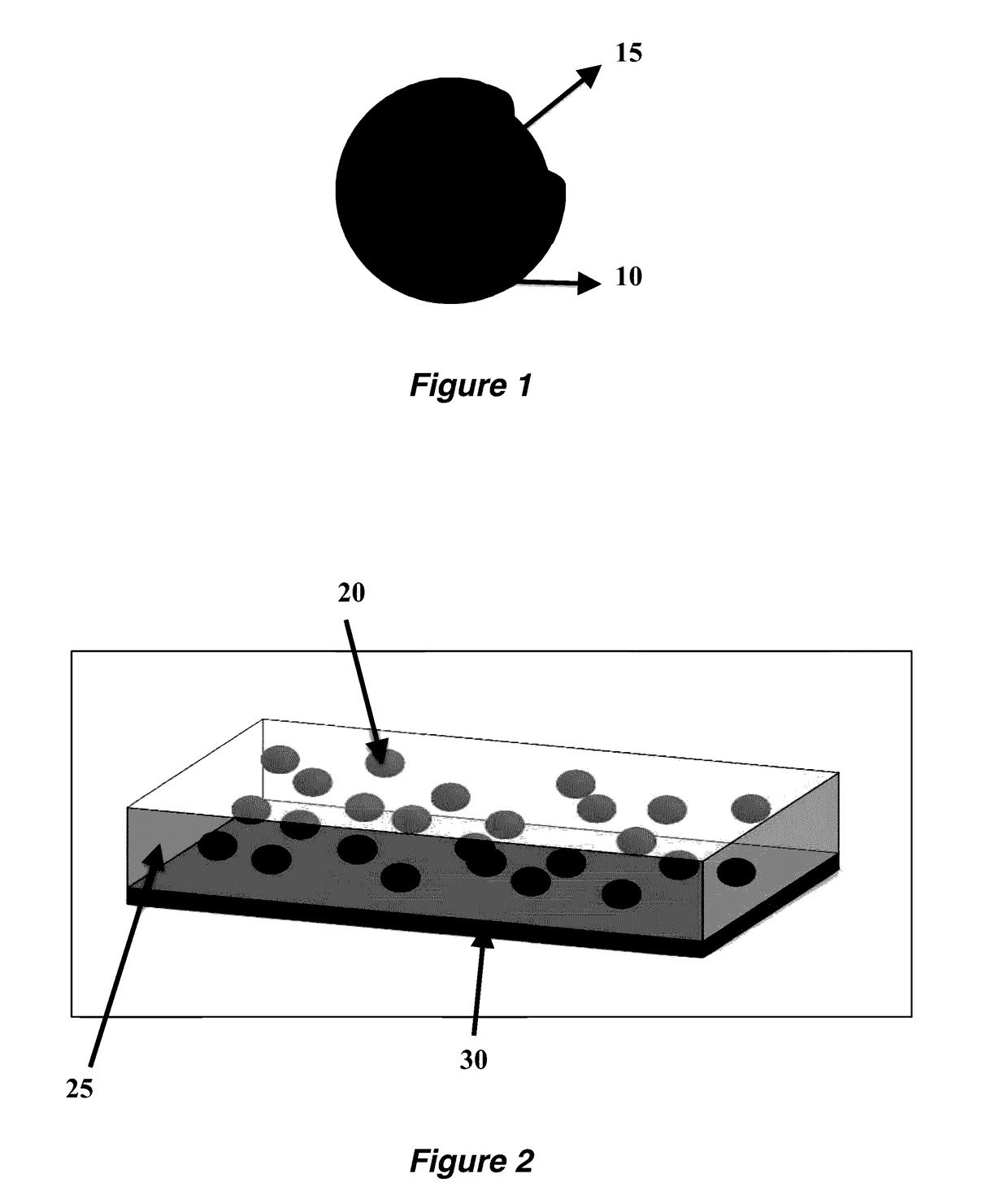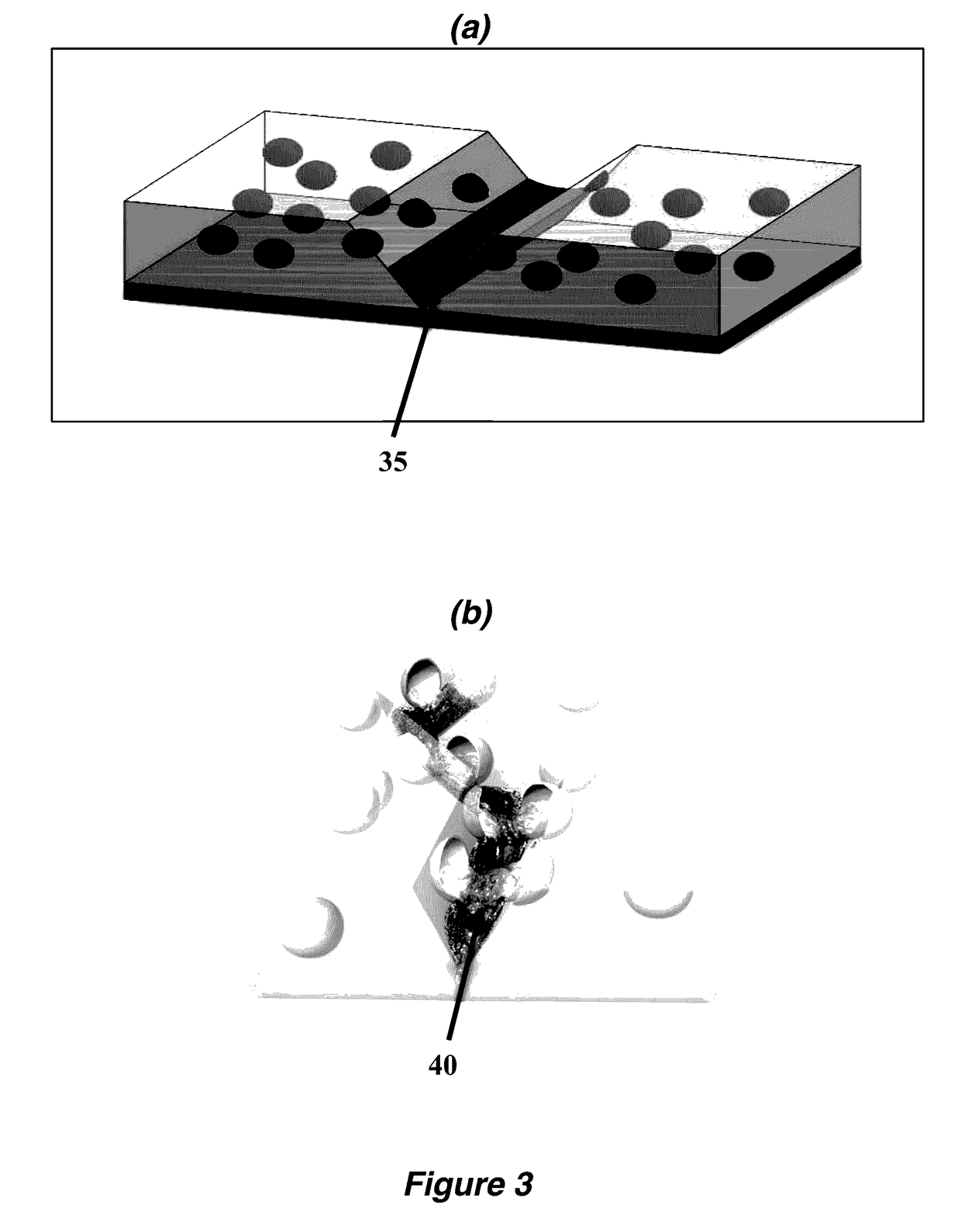Autonomic damage indication in coatings
a technology of autonomic damage and coating, applied in the direction of coatings, epoxy resin coatings, etc., can solve the problems of reducing the mechanical performance of substrates, affecting the integrity of coatings, and corroding environments, so as to improve the safety and sustainability of materials, reduce inspection costs, and improve the effect of safety and sustainability
- Summary
- Abstract
- Description
- Claims
- Application Information
AI Technical Summary
Benefits of technology
Problems solved by technology
Method used
Image
Examples
example 1
and General Procedures
[0080](i) Materials
[0081]2′,7′-Dichlorofluorescein (DCF, Sigma-Aldrich, St. Louis, Mo.) was used as a visual indicator for mechanical damage. Ethylene maleic anhydride copolymer (EMA, Zemac-400, average molecular weight=400,000) from Vertellus (Indianapolis, Ind.), urea, ammonium chloride, resorcinol, 1-octanol, formaldehyde solution (37 wt % in H2O), ethyl phenyl acetate (EPA), sodium hydroxide (NaOH) from Sigma-Aldrich, and commercial polyurethane (PU) prepolymer (Desmodur L 75) from Bayer MaterialScience were used for synthesis of microcapsules. EPONT™ resin 813 (74% diglycidyl ether of bisphenol-A and 26% o-cresyl glycidyl ether) and curing agent EPIKURET™ 3233 (polyoxypropylene triamine) (Miller-Stephenson, Hoston, Tex.) were selected as matrix materials. Ninhydrin (2,2-Dihydroxyindane-1,3-dione) obtained from Sigma-Aldrich was used to detect the residual amine content in matrix materials.
[0082](ii) Synthesis of Indicating Microcapsules
[0083]The microcapsu...
example 2
ization of DCF Color Change
[0088]DCF is a good indicating agent due to its high reactivity with a variety of amines to produce a vibrant color change. DCF is soluble in EPA, a non-toxic solvent that has previously been encapsulated. The DCF / EPA solution is initially light yellow in color, but changes into an opaque red suspension almost immediately after coming into contact with a base, such as an amine. For instance, adding one drop of polyoxypropylene triamine (EPIKURE™ 3233, Hexion) to a DCF / EPA solution changed the solution from light yellow (acid form of DCF) to deep red (base form of DCF). This reaction and images of the DCF / EPA solutions before and after being exposed to an amine are shown in (a) of FIG. 4, while (b) of the figure shows the visible spectra of the DCF / EPA solution before and after addition of the EPIKURE™ 3233 curing agent. The molecular structures of DCF before and after the reaction are shown in (a) of FIG. 4 and were determined by nuclear magnetic resonance...
example 3
xy Specimens
[0092]Epoxy specimens were prepared with a stoichiometric ratio of EPON™ Resin 813 (bisphenol-A based epoxy resin diluted with cresyl, Hexion) and amine-curing agent EPIKURE™ 3233 (100:43) and the specimens were subjected to various cure cycles. FIG. 5 shows differential scanning calorimetry of stoichiometric EPON 813 and EPIKURE 3233 with different cure cycles. The degree of cure was about 96% after about 48 h at about 35° C. and about 100% after about an additional approximately 2 h at about 100° C. Note that the thermal conditions indicated in the graph refer to the last isothermal process, e.g., those cured at about 100° C. experienced about 48 h at about 35° C., about 6 h at about 50° C., and about 2 h at about 80° C., prior to the last thermal process.
PUM
| Property | Measurement | Unit |
|---|---|---|
| wt % | aaaaa | aaaaa |
| wt % | aaaaa | aaaaa |
| diameter | aaaaa | aaaaa |
Abstract
Description
Claims
Application Information
 Login to View More
Login to View More - R&D
- Intellectual Property
- Life Sciences
- Materials
- Tech Scout
- Unparalleled Data Quality
- Higher Quality Content
- 60% Fewer Hallucinations
Browse by: Latest US Patents, China's latest patents, Technical Efficacy Thesaurus, Application Domain, Technology Topic, Popular Technical Reports.
© 2025 PatSnap. All rights reserved.Legal|Privacy policy|Modern Slavery Act Transparency Statement|Sitemap|About US| Contact US: help@patsnap.com



